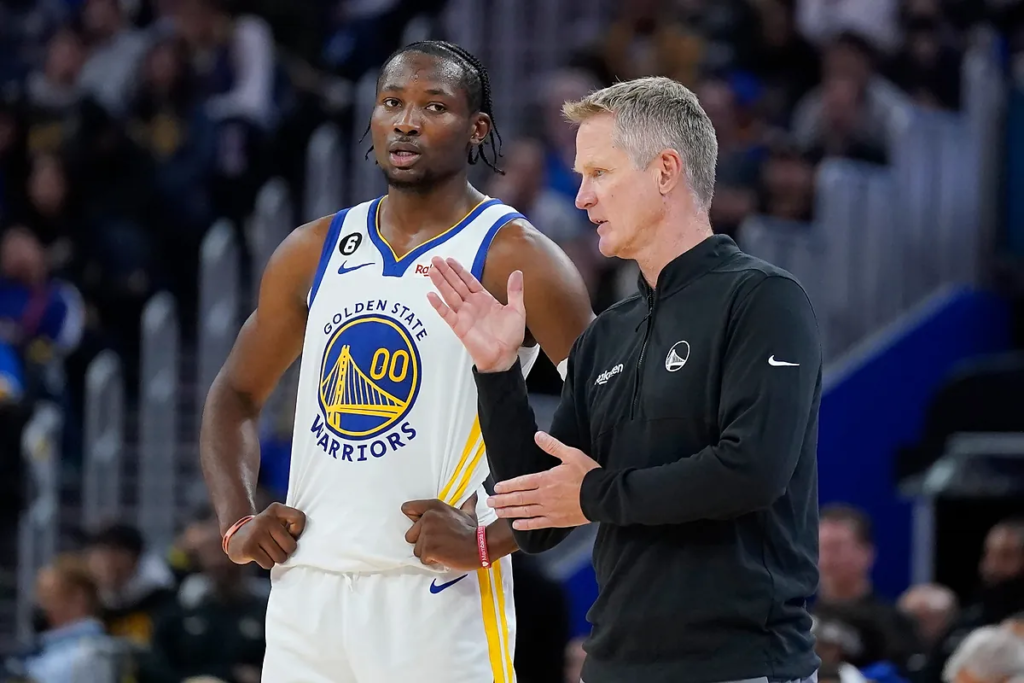The Golden State Warriors are approaching training camp with a roster that feels unusually thin. Only nine players are currently signed to standard NBA contracts, an uncommon scenario for a franchise that has long sought to maintain depth around Stephen Curry.
At the center of this uncertain offseason is forward Jonathan Kuminga, whose contract negotiations have become one of the league’s more closely watched storylines.
Golden State has reportedly placed a three-year, $75.2 million contract on the table, with the final year structured as a team option.
The figure represents a significant commitment for a player who, despite flashes of promise, has yet to secure a consistent role under Steve Kerr.
What does Kuminga want?
For Kuminga, the issue is less about the headline number and more about long-term control. A deal with a team option provides security only for the franchise, limiting his ability to shape his future.
That dynamic has created friction, particularly given Golden State’s reluctance to explore sign-and-trade scenarios.
If no agreement is reached by the October 1 deadline, Kuminga retains the option of accepting a $7.9 million qualifying offer. Doing so would keep him in Golden State for one more season but allow him to enter unrestricted free agency in 2026.
While that route would grant him more autonomy, it also carries risk: a single injury or down year could sharply reduce his market value.
Trade scenarios gain attention
The unresolved contract situation has fueled speculation about potential trades. Several teams are monitoring developments, with the Sacramento Kings and Phoenix Suns often cited as possible destinations.
Sacramento’s reported interest includes packages centered around guard Malik Monk and a future first-round pick. For Golden State, Monk would provide much-needed perimeter scoring behind Curry, though the long-term upside of such a deal is debatable.
Chicago also represents a logical landing spot. The Bulls lack depth at forward, and Kuminga’s athleticism could address that gap while providing a scoring option alongside Josh Giddey and Nikola Vuevi.
In return, Golden State could target frontcourt reinforcements as well as future draft assets, positioning themselves for greater roster balance.
New Orleans has been floated as another option, with forward Trey Murphy a potential trade chip.
Murphy’s shooting and defensive versatility would align well with Golden State’s system. However, given Murphy’s growing value in New Orleans, such a move would likely require additional incentives from the Warriors.
The Warriors’ cautious stance reflects broader concerns about financial flexibility.
The organization is believed to be looking ahead to the summer of 2027, when several marquee players may become available in free agency.
Committing heavily to Kuminga could limit the front office’s ability to participate in that market.
For Kuminga, the standoff is as much about role as it is about money. At 22, he has expressed confidence in his potential to become a multi-time All-Star, but he has struggled to carve out consistent minutes in a veteran-heavy rotation.
A change of scenery could provide the opportunity to play through mistakes and develop into the centerpiece he envisions himself to be.
Golden State thus faces a delicate decision: either secure Kuminga on terms that preserve roster flexibility, or move him for assets that better fit the team’s immediate timeline. Training camp will soon force both sides to confront those choices, with the outcome shaping not just Kuminga’s career path, but also the Warriors’ trajectory in a competitive Western Conference.
Read the full article here

